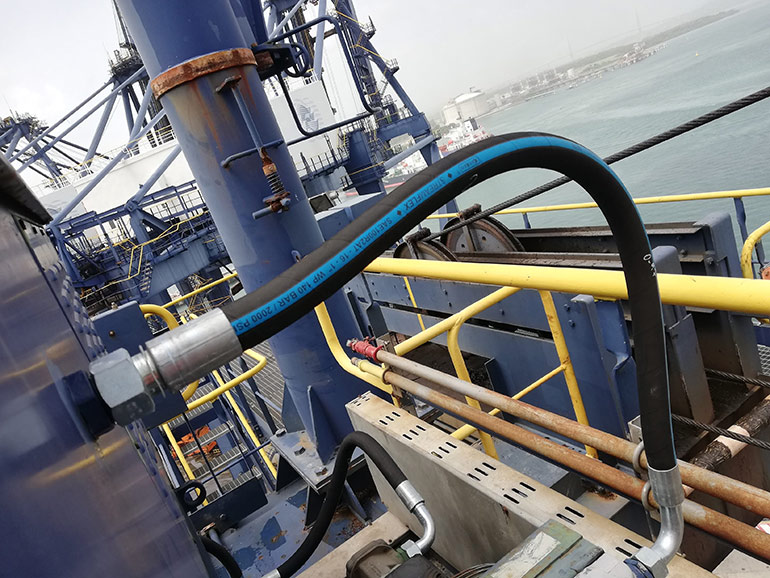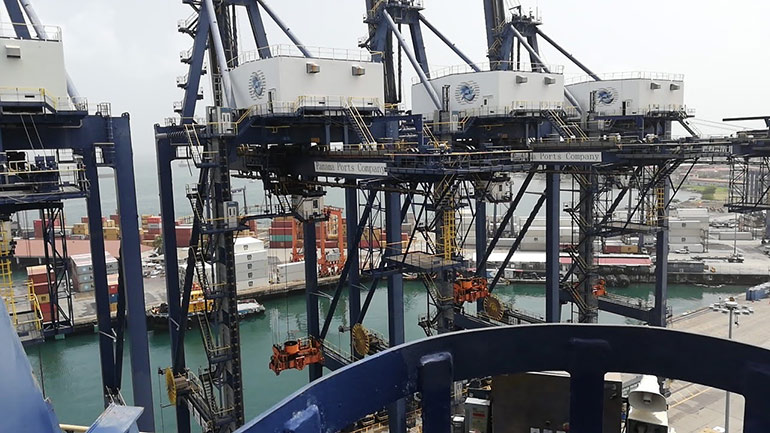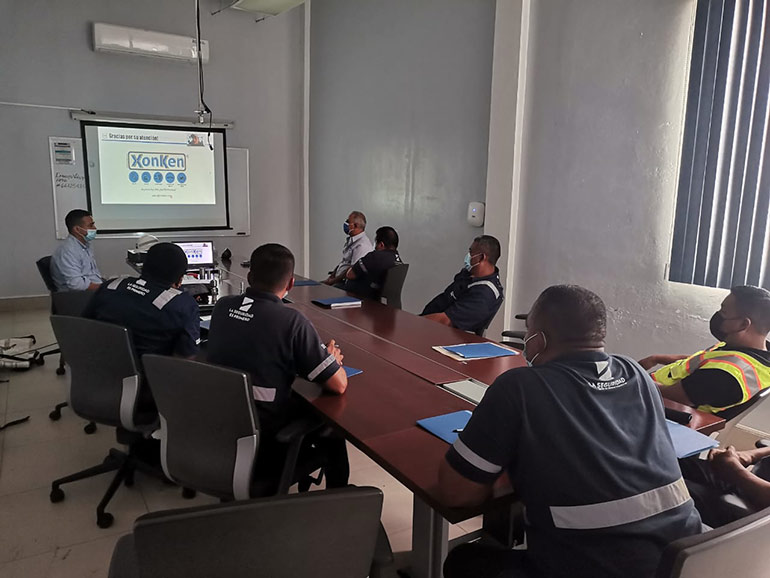As most users of fluid power technologies know, one of the most vulnerable systems for leakage is within hose assemblies. This is not because hose, fittings, and couplings are poorly designed but, most often, the result of improper assembly design and maintenance.
That’s why XonKen, a Chinese manufacturer of hydraulic hose and fittings, has developed its ZeroLeaks program to stop leakage once and for all. This comprehensive initiative addresses the challenge of sudden leaks in hydraulic hose assemblies. The program encompasses hose assembly design and installation, maintenance, repair, and training.

| Courtesy of XonKen
According to Luis Alberto Leon, business development manager at XonKen, the company recognized the need to add value to its high-quality hose products. XonKen competes with top North American and European hose brands. It also specializes in quality rubber products, manufacturing not only hose but belt products and others as well.
“XonKen is committed to the environment in our process and product social responsibility,” said Leon. “This has led us to innovate and share tools, technology, knowledge, and experience in the operational hydraulic system of corporate high-end users and large users of hydraulic hose.”
The ZeroLeaks program aims to significantly reduce ecological risks due to hydraulic fluid leaks, minimizing the leaks of hydraulic hose assemblies by applying the best practices for crimping, installing, and maintaining hydraulic hose replacements. Reducing such leaks will prevent unexpected process stoppages. This, in turn, generates a substantial cost reduction for the overall operations.

“You can quickly see the result through oil consumption. When you have a leak, you have high oil consumption in your plants. It may be easier to buy a drum of oil, but procurement will see savings in oil purchases right away,” Leon said.
The program encompasses five key objectives:
- Achieve a strategic alliance between end users and distributors that supply hydraulic hoses, fittings, and components to obtain competitive prices, optimize inventories, and guarantee a timely 24/7 service for emergencies, technical training, and technical support.
- Adopt a proactive maintenance philosophy implementing root cause analysis (RCA) and reliability-centered maintenance (RCM) methodology for diagnosing, analyzing, and troubleshooting leaks in hydraulic components.
- Implement best practices for storing, preparing, crimping, inspecting, installing, and maintaining hydraulic hose assemblies.
- Implement the ZeroLeaks mobile app for the registration, control, and monitoring of hose assemblies in terms of identification, crimping data (operator, crimping machine, external crimping diameters), installation data (date, location, operator), hours in service, scheduling frequency of inspections, and scheduling for replacements.
- Provide technical support prior to environmental audits, as well as to resolve non-conformities found, and for waste management, particularly with points and actions associated with hydraulic oil leaks in equipment and processes.
The program is currently being implemented at the Hutchison Port in Panama for the many hoses running throughout the port’s two dozen or so cranes. XonKen is installing and monitoring data for all hoses and hydraulic oil throughout the equipment while providing ongoing training for the technicians, operators, and as many personnel who install and use hose assembly equipment. The full program implementation is three years from installation to complete data monitoring year over year.

| Courtesy of XonKen
In the Hutchison Port program, Leon said that the hose inventory is now split between the port, its distributor, and XonKen’s warehouse, which reduces on-site inventory needs while ensuring rapid deployment of new hose as needed. Additionally, the distributor has committed to resolving any emergencies within an hour, he noted.
One of the key objectives in training is to ensure that operators understand the correct amount of torque needed to install a hose, as that is often the number one point of failure. “With this product, we want to collect and summarize all the data to send to management and the operator. The data needs to be open to all personnel concerned with the operation — the operators, maintenance, distributor, and others.
“You need to establish this confidence with the end user to get the best result of every product,” Leon said. “It’s a philosophy. The hydraulic hose assembly is vital for the operation. It’s not a commodity or just a part that they replace. We need to be more professional in every aspect of the hose process, from the start of the raw material production in China, to when our distributors receive the hose in their warehouse, to when we deliver it to the end user. And when we deliver it to the end user, we need to monitor it to ensure that they crimp and install the hose properly.”
For more information, contact Luis Alberto Leon, Business Development Manager, XonKen Inc. at lleon@xonken.com.
Filed Under: Components Oil Coolers, Hose & Tubing, Hose Assembly Tips, Technologies, Trending